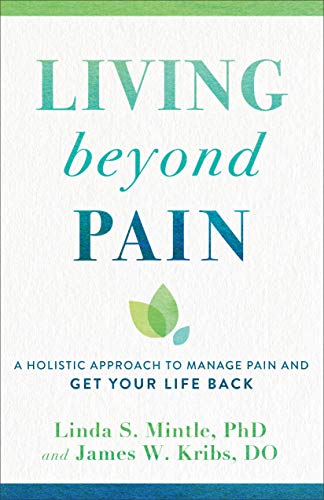 Living beyond pain is a goal for every chronic pain sufferer. And it’s the title of my new book co-authored with physician Dr. James Kribs (Baker Books). All of us who struggle with pain want improved functioning and quality of life. Good news! This is possible.
Living beyond pain is a goal for every chronic pain sufferer. And it’s the title of my new book co-authored with physician Dr. James Kribs (Baker Books). All of us who struggle with pain want improved functioning and quality of life. Good news! This is possible.
Chronic pain is the primary reason Americans are on disability. It is the number one reason patients see their doctors. And pain patients are not making it up, they hurt!
As you know by now, one of the main treatments for pain has been opioid medications. Because so many people have been prescribed opioids for chronic pain, we are in trouble and have what has been called a public health epidemic. It’s serious, with friends overdosing in our neighborhoods, loved ones becoming addicted and feeling hopeless. But the problem is that opioids are not effective for chronic non cancer pain management, so we need other ways to approach pain.
Simply put, the better you understand pain, the better equipped you are to gain control over it. This is why we wrote this book. You can reduce your pain and resume your life. The process begins with compassionate care that allows you not to be embarrassed or to feel like a complainer. We’ve heard your stories and know your pain. We want to help make you aware of how to better deal with your pain.
Pain can be good and protective, but at other times, it can be chronic and a signal that something is wrong in the way pain is being processed. Constant alarms going off due to chronic inflammation or the neural highways of the spinal cord and brain changing and becoming more sensitive are signals that something’s wrong. The protective system is turned on, thinking there is a threat.
When pain becomes chronic, it invades our relationships, finances, identity, and more. It tries to overtake our lives and will succeed if we allow it to. It can be persistent. Pain, when persistent, creates distress and impairment and can negatively impact quality of life.
Part of the work in dealing with chronic pain is desensitizing your brain so you can turn down the volume on pain. When you address the factors that influence the experience of pain—like emotions and thoughts—you can often reverse how the nervous system is sensitized.
The approach we take is a holistic one, integrating the structural, functional, emotional, spiritual, and social aspects of health and healing. Treatment of pain involves body, mind, and spirit and employs an interdisciplinary approach to treat the whole person. The physical, psychological, social, and spiritual parts of a person interact to perpetuate, worsen, or heal pain. Therefore, the whole person must be addressed.
Addressing all these parts of who you are is important to living beyond pain. While it may not be possible to remove all your pain, it is possible to have less pain and more function. Once you better understand how you can turn the volume up or down on pain, the more in control you will feel. So, don’t despair! There is much you can do to get back your life.


